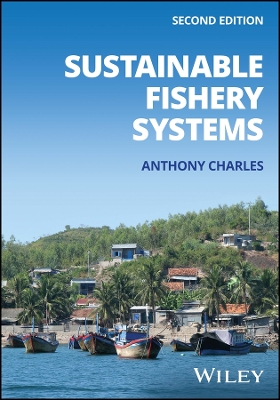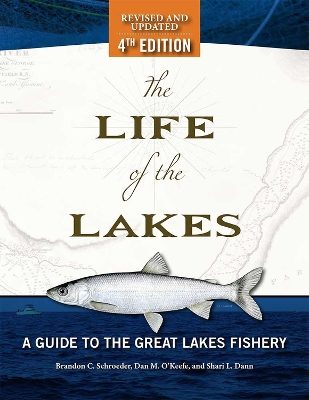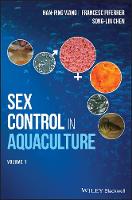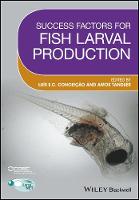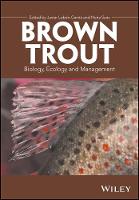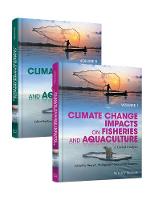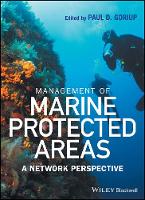Aquaculture
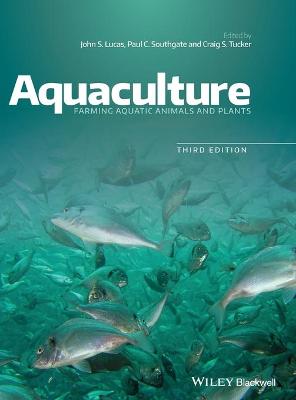 -15%
portes grátis
-15%
portes grátis
Aquaculture
Farming Aquatic Animals and Plants
Tucker, Craig S.; Southgate, Paul C.; Lucas, John S.
John Wiley and Sons Ltd
01/2019
672
Dura
Inglês
9781119230861
15 a 20 dias
1924
Preface to the Third Edition xv
Preface to the Second Edition xvii
Preface to the First Edition xix
Acknowledgments xxi
1 Introduction 1
John S. Lucas
1.1 What is and What isn't Aquaculture? 1
1.2 Origins of Aquaculture and Agriculture 2
1.3 Aquaculture and Capture Fisheries Production 4
1.4 The Efficiency of Aquaculture for Food Production 7
1.5 Has There Been a 'Blue' Revolution? 9
1.6 The Big Producers 10
1.7 China 12
1.8 Issues for Developed Countries 13
1.9 An Allegory 14
1.10 Diversity of Aquaculture 15
1.11 Fishery Stock Enhancement and Restoration 15
1.12 Summary 16
References 17
2 Principles of Aquaculture 19
Paul C. Southgate and John S. Lucas
2.1 Introduction 19
2.2 Intensity of Aquaculture 19
2.3 Polyculture 23
2.4 Integrated Agri-Aquaculture Systems 24
2.5 Static, Open, Semi-Closed and Recirculating (Closed) Systems 25
2.6 Selecting a New Species for Farming 28
2.7 Developing a New Farm or a New Farmed Species 31
2.8 Case Studies 33
2.9 Summary 38
References 39
3 Aquaculture Systems Design 41
Igor Pirozzi, Paul C. Southgate and John S. Lucas
3.1 Introduction 41
3.2 Site Selection and Development 41
3.3 Aquaculture Systems 43
3.4 Plumbing and Pumps 55
3.5 Hatchery Systems 59
3.6 Summary 61
References 61
4 Water Quality 63
Claude E. Boyd and Craig S. Tucker
4.1 Introduction 63
4.2 Water Quality Variables 63
4.3 Effects of Water Quality on Aquatic Animals 73
4.4 Pond Water-Quality Management 78
4.5 Effluents 89
4.6 Summary 91
References 92
5 Resource Use and the Environment 93
Claude E. Boyd, Aaron A. McNevin and Craig S. Tucker
5.1 Introduction 93
5.2 An Overview of Resource Use and Environmental Issues 94
5.3 Land Use 97
5.4 Water Use 99
5.5 Energy Use 101
5.6 Feed-Fish Use 102
5.7 Chemicals 105
5.8 Water Pollution 107
5.9 Best Management Practices 109
5.10 Environmental Advocacy in Aquaculture 111
5.11 Summary 112
References 112
6 Reproduction, Life Cycles and Growth 113
John S. Lucas and Paul C. Southgate
6.1 Introduction 113
6.2 Reproductive Physiology 113
6.3 Life Cycles 116
6.4 Growth 120
6.5 Summary 124
References 125
7 Genetics 127
Rex Dunham
7.1 Introduction 127
7.2 Basic Genetics 128
7.3 Epigenetics 130
7.4 Domestication and Strain Evaluation 130
7.5 Selection 131
7.6 Inbreeding and Maintenance of Genetic Quality 136
7.7 Crossbreeding and Hybridisation 136
7.8 Chromosomal Techniques 140
7.9 Xenogenesis 146
7.10 Genetic Engineering 146
7.11 Gene Editing 151
7.12 Combining Genetic Enhancement Programs 152
7.13 Genotype- environment Interactions 152
7.14 Future Developments 153
7.15 Summary 154
References 154
8 Nutrition and Feeds 157
Lou D'Abramo
8.1 Introduction 157
8.2 Energy Consumption and Partitioning (Bioenergetics) 158
8.3 The Relationship between Growth and Food Consumption 159
8.4 Requirements and Metabolic Functions of Nutrients 160
8.5 Digestion and Assimilation of Food 170
8.6 Formulation, Manufacture and Digestibility of Feeds 171
8.7 Nutrition Management Strategies 178
8.8 Feed Management 180
8.9 Emerging Research Areas 181
8.10 Summary 181
References 182
9 Hatchery and Larval Foods 183
Paul C. Southgate
9.1 Introduction 183
9.2 Foods for Hatchery Culture Systems 183
9.3 Feeding Strategy for Larval Culture 196
9.4 Compound Hatchery Feeds 196
9.5 Development of Microdiets for Fish Larvae 197
9.6 Harvesting Natural Plankton 199
9.7 Pond Fertilisation as a Food Source for Aquaculture 199
9.8 Summary 200
References 201
10 Disease Principles 203
Leigh Owens
10.1 Introduction to Disease 203
10.2 General Principles of Infectious Diseases in Aquaculture 203
10.3 The Philosophy of Disease Control 205
10.4 Generalised Disease Management Techniques 206
10.5 Major Diseases 208
10.6 Summary 216
References 216
11 Pathogens and Parasites 217
Kate S. Hutson and Kenneth D. Cain
11.1 Introduction 217
11.2 Viruses 218
11.3 Bacteria 222
11.4 Fungi 229
11.5 Protozoans 230
11.6 Myxozoans 234
11.7 Platyhelminths 235
11.8 Nematodes 239
11.9 Acanthocephalans 240
11.10 Leeches 240
11.11 Crustaceans 241
11.12 Fishborne Zoonotic Agents and Aquaculture 244
11.13 Aquaponics 245
11.14 Summary 246
References 246
12 Prevention of Disease by Vaccination 249
Andrew Barnes
12.1 Introduction 249
12.2 A Beginner's Guide to Fish Immunology 250
12.3 Vaccinating Fishes 260
12.4 Types of Vaccine 260
12.5 Routes of Delivery 263
12.6 Adjuvants 266
12.7 Vaccination in Practice 266
12.8 Research and Development Track for Commercial Fish Vaccines 267
12.9 Future Trends: Vaccination in the Age of Genomics 269
12.10 Conclusions 269
12.11 Summary 270
References 270
13 Post-harvest Technology and Processing 273
Allan Bremner
13.1 Introduction 273
13.2 Basic Characteristics 274
13.3 Safety and Health 274
13.4 Nutritional Aspects 275
13.5 The Balance between Safety and Nutrition 276
13.6 Aquaculture and Fisheries Products 276
13.7 Harvesting 276
13.8 Live Transport 276
13.9 Muscle Structure: Rigor and Texture 278
13.10 Stunning and Post-Mortem Processing 280
13.11 Effects of Feed on the Product 283
13.12 Specialised Niche Market Products 284
13.13 Flavours and Taints 284
13.14 Texture 285
13.15 Concepts: Quality, Freshness, Shelf Life and Quality Index 285
13.16 Microbiology, Specific Spoilage Organism (SSO) and Other Spoilage Processes 287
13.17 Freezing and Frozen Storage 288
13.18 Packaging 290
13.19 Quality Control, Quality Assurance, Haccp and Risk Assessment 293
13.20 Traceability, Identification and Origin 294
13.21 Canning 295
13.22 Smoking 295
13.23 Summary 296
References 296
14 Economics 299
Clem Tisdell
14.1 Introduction 299
14.2 Profitability from a Business Viewpoint (Farm Models) 300
14.3 Markets and Marketing 302
14.4 Economies of Scale and Similar Factors 306Contents ix
14.5 Allowing for and Coping with Business Risk and Uncertainty 308
14.6 Economic Assessment from a Social Standpoint 310
14.7 Summary 312
References 312
15 Seaweed and Microalgae 313
Seaweed: Nicholas A. Paul and Microalgae: Michael Borowitzka
15.1 General Introduction 313
15.2 Seaweeds 313
15.3 Microalgae 327
15.4 Summary 335
References 336
16 Carps 339
Sena De Silva and Qidong Wang
16.1 Introduction 339
16.2 Biology of the Important Carps in Aquaculture 341
16.3 Artificial Propagation 350
16.4 Nutrition 352
16.5 Culture Practices 353
16.6 Diseases 358
16.7 Genetic Improvement 358
16.8 Culture-Based Fisheries 359
16.9 Conclusions 360
16.10 Summary 360
References 361
17 Salmonids 363
John Purser
17.1 Introduction 363
17.2 Biology 364
17.3 Freshwater Farming 367
17.4 Marine Farming 376
17.5 Feeds 381
17.6 Grading and Stocking Densities 383
17.7 Maturation, Sex Reversal and Triploidy 384
17.8 Fish Health 386
17.9 Harvesting and Products 387
17.10 Environmental Issues 387
17.11 Summary 388
References 388
18 Tilapias 391
Victor Suresh and Ram C. Bhujel
18.1 Introduction 391
18.2 Family, Species and Genetic Variation 393
18.3 Ecology and Distribution 395
18.4 Sex Determination and Reproduction 396
18.5 Control of Reproduction 397
18.6 Seed Production 399
18.7 Nutrition, Feeds and Feeding 401
18.8 Grow- Out Systems 405
18.9 Disease Management 410
18.10 Harvest, Processing and Marketing 412
18.11 Summary 413
References 414
19 Catfishes 415
Craig S. Tucker, Aaron A. McNevin, Les Torrans and Brian Bosworth
19.1 Introduction 415
19.2 Pangasiid Catfishes 415
19.3 Ictalurid Catfishes 421
19.4 Clariid Catfishes 431
19.5 Summary 433
References 434
20 Marine Finfish Aquaculture 437
Wade O. Watanabe, Md Shah Alam, Patrick M. Carroll, Harry V. Daniels and Jeffrey M. Hinshaw
20.1 Introduction 437
20.2 Importance of Marine Fish Aquaculture 437
20.3 Hatcheries 440
20.4 Grow- out Systems 444
20.5 Nutrition and Feeds 448
20.6 Marine Fishes in Aquaculture 449
20.7 Milkfish 449
20.8 European Seabass 454
20.9 Gilthead Sea Bream 456
20.10 Yellowtail Amberjack 459
20.11 Red Sea Bream 462
20.12 Cobia 465
20.13 Flatfishes 468
20.14 Sturgeon 477
20.15 Summary 481
References 482
21 Soft-shelled Turtles 483
Qingjun Shao and John S. Lucas
21.1 Introduction 483
21.2 Biology 483
21.3 Aquaculture Development 485
21.4 Culture Facilities 486
21.5 Culture Stages 488
21.6 Water Quality 490
21.7 Nutrition, Feeding and Feed Formulation 491
21.8 Infectious Diseases 493
21.9 Harvesting and Processing 494
21.10 The Future of Soft-Shelled Turtle Farming 495
21.11 Summary 496
References 496
22 Shrimps 499
Darryl Jory
22.1 Introduction 499
22.2 Cultured Species 502
22.3 Grow-Out Systems 503
22.4 Preparation of Ponds 506
22.5 Reproduction and Maturation 508
22.6 Hatchery Design and Larval Culture 510
22.7 Seedstock Quality and Stocking 512
22.8 Production Management and Harvest 513
22.9 Nutrition, Formulated Diets and Feed Management 518
22.10 Emerging Production Technologies and Issues 521
22.11 Responsible Shrimp Farming and the Challenge of Sustainability 524
22.12 Summary 524
References 525
23 Freshwater Decapod Crustaceans 527
Chaoshu Zeng, John S. Lucas and Paul C. Southgate
23.1 Introduction 527
23.2 Farmed Species 529
23.3 The Chinese Mitten Crab 530
23.4 Freshwater Crayfish 536
23.5 Freshwater Prawns 543
23.6 Summary 547
References 548
24 Bivalve Molluscs 549
John S. Lucas
24.1 Introduction 549
24.2 Aspects of Biology 550
24.3 Farmed Bivalves 552
24.4 Phases of Bivalve Aquaculture 555
24.5 Farming Problems 560
24.6 Introductions and Other Environmental Issues 564
24.7 Industry Reviews 565
24.8 The Future of Bivalve Aquaculture 570
24.9 Summary 570
References 571
25 Abalone 573
Peter Cook
25.1 Introduction 573
25.2 Production from Fisheries and Farms 573
25.3 Biology 576
25.4 Culture Techniques 577
25.5 Postlarvae and Juveniles 580
25.6 Grow-Out Systems 580
25.7 Diseases and Parasites 583
25.8 The World Abalone Market 584
25.9 Summary 584
References 585
26 Aquaculture in the Aquarium Industry 587
Thane A. Militz
26.1 Introduction 587
26.2 The Aquarium Industry 587
26.3 The Need for Aquaculture in the Aquarium Industry 589
26.4 Aquaculture of Tropical Freshwater Organisms 593
26.5 Aquaculture of Tropical Marine Organisms 601
26.6 Sustainable Development 612
26.7 The Future of Aquaculture in the Aquarium Industry 614
26.8 Summary 614
References 615
27 The Future of Aquaculture 617
John Hargreaves, Randall Brummett and Craig S. Tucker
27.1 Introduction 617
27.2 Drivers of Future Demand and Supply 619
27.3 Responding to the Challenges of the Future 625
27.4 Summary 635
References 636
Index 637
Preface to the Third Edition xv
Preface to the Second Edition xvii
Preface to the First Edition xix
Acknowledgments xxi
1 Introduction 1
John S. Lucas
1.1 What is and What isn't Aquaculture? 1
1.2 Origins of Aquaculture and Agriculture 2
1.3 Aquaculture and Capture Fisheries Production 4
1.4 The Efficiency of Aquaculture for Food Production 7
1.5 Has There Been a 'Blue' Revolution? 9
1.6 The Big Producers 10
1.7 China 12
1.8 Issues for Developed Countries 13
1.9 An Allegory 14
1.10 Diversity of Aquaculture 15
1.11 Fishery Stock Enhancement and Restoration 15
1.12 Summary 16
References 17
2 Principles of Aquaculture 19
Paul C. Southgate and John S. Lucas
2.1 Introduction 19
2.2 Intensity of Aquaculture 19
2.3 Polyculture 23
2.4 Integrated Agri-Aquaculture Systems 24
2.5 Static, Open, Semi-Closed and Recirculating (Closed) Systems 25
2.6 Selecting a New Species for Farming 28
2.7 Developing a New Farm or a New Farmed Species 31
2.8 Case Studies 33
2.9 Summary 38
References 39
3 Aquaculture Systems Design 41
Igor Pirozzi, Paul C. Southgate and John S. Lucas
3.1 Introduction 41
3.2 Site Selection and Development 41
3.3 Aquaculture Systems 43
3.4 Plumbing and Pumps 55
3.5 Hatchery Systems 59
3.6 Summary 61
References 61
4 Water Quality 63
Claude E. Boyd and Craig S. Tucker
4.1 Introduction 63
4.2 Water Quality Variables 63
4.3 Effects of Water Quality on Aquatic Animals 73
4.4 Pond Water-Quality Management 78
4.5 Effluents 89
4.6 Summary 91
References 92
5 Resource Use and the Environment 93
Claude E. Boyd, Aaron A. McNevin and Craig S. Tucker
5.1 Introduction 93
5.2 An Overview of Resource Use and Environmental Issues 94
5.3 Land Use 97
5.4 Water Use 99
5.5 Energy Use 101
5.6 Feed-Fish Use 102
5.7 Chemicals 105
5.8 Water Pollution 107
5.9 Best Management Practices 109
5.10 Environmental Advocacy in Aquaculture 111
5.11 Summary 112
References 112
6 Reproduction, Life Cycles and Growth 113
John S. Lucas and Paul C. Southgate
6.1 Introduction 113
6.2 Reproductive Physiology 113
6.3 Life Cycles 116
6.4 Growth 120
6.5 Summary 124
References 125
7 Genetics 127
Rex Dunham
7.1 Introduction 127
7.2 Basic Genetics 128
7.3 Epigenetics 130
7.4 Domestication and Strain Evaluation 130
7.5 Selection 131
7.6 Inbreeding and Maintenance of Genetic Quality 136
7.7 Crossbreeding and Hybridisation 136
7.8 Chromosomal Techniques 140
7.9 Xenogenesis 146
7.10 Genetic Engineering 146
7.11 Gene Editing 151
7.12 Combining Genetic Enhancement Programs 152
7.13 Genotype- environment Interactions 152
7.14 Future Developments 153
7.15 Summary 154
References 154
8 Nutrition and Feeds 157
Lou D'Abramo
8.1 Introduction 157
8.2 Energy Consumption and Partitioning (Bioenergetics) 158
8.3 The Relationship between Growth and Food Consumption 159
8.4 Requirements and Metabolic Functions of Nutrients 160
8.5 Digestion and Assimilation of Food 170
8.6 Formulation, Manufacture and Digestibility of Feeds 171
8.7 Nutrition Management Strategies 178
8.8 Feed Management 180
8.9 Emerging Research Areas 181
8.10 Summary 181
References 182
9 Hatchery and Larval Foods 183
Paul C. Southgate
9.1 Introduction 183
9.2 Foods for Hatchery Culture Systems 183
9.3 Feeding Strategy for Larval Culture 196
9.4 Compound Hatchery Feeds 196
9.5 Development of Microdiets for Fish Larvae 197
9.6 Harvesting Natural Plankton 199
9.7 Pond Fertilisation as a Food Source for Aquaculture 199
9.8 Summary 200
References 201
10 Disease Principles 203
Leigh Owens
10.1 Introduction to Disease 203
10.2 General Principles of Infectious Diseases in Aquaculture 203
10.3 The Philosophy of Disease Control 205
10.4 Generalised Disease Management Techniques 206
10.5 Major Diseases 208
10.6 Summary 216
References 216
11 Pathogens and Parasites 217
Kate S. Hutson and Kenneth D. Cain
11.1 Introduction 217
11.2 Viruses 218
11.3 Bacteria 222
11.4 Fungi 229
11.5 Protozoans 230
11.6 Myxozoans 234
11.7 Platyhelminths 235
11.8 Nematodes 239
11.9 Acanthocephalans 240
11.10 Leeches 240
11.11 Crustaceans 241
11.12 Fishborne Zoonotic Agents and Aquaculture 244
11.13 Aquaponics 245
11.14 Summary 246
References 246
12 Prevention of Disease by Vaccination 249
Andrew Barnes
12.1 Introduction 249
12.2 A Beginner's Guide to Fish Immunology 250
12.3 Vaccinating Fishes 260
12.4 Types of Vaccine 260
12.5 Routes of Delivery 263
12.6 Adjuvants 266
12.7 Vaccination in Practice 266
12.8 Research and Development Track for Commercial Fish Vaccines 267
12.9 Future Trends: Vaccination in the Age of Genomics 269
12.10 Conclusions 269
12.11 Summary 270
References 270
13 Post-harvest Technology and Processing 273
Allan Bremner
13.1 Introduction 273
13.2 Basic Characteristics 274
13.3 Safety and Health 274
13.4 Nutritional Aspects 275
13.5 The Balance between Safety and Nutrition 276
13.6 Aquaculture and Fisheries Products 276
13.7 Harvesting 276
13.8 Live Transport 276
13.9 Muscle Structure: Rigor and Texture 278
13.10 Stunning and Post-Mortem Processing 280
13.11 Effects of Feed on the Product 283
13.12 Specialised Niche Market Products 284
13.13 Flavours and Taints 284
13.14 Texture 285
13.15 Concepts: Quality, Freshness, Shelf Life and Quality Index 285
13.16 Microbiology, Specific Spoilage Organism (SSO) and Other Spoilage Processes 287
13.17 Freezing and Frozen Storage 288
13.18 Packaging 290
13.19 Quality Control, Quality Assurance, Haccp and Risk Assessment 293
13.20 Traceability, Identification and Origin 294
13.21 Canning 295
13.22 Smoking 295
13.23 Summary 296
References 296
14 Economics 299
Clem Tisdell
14.1 Introduction 299
14.2 Profitability from a Business Viewpoint (Farm Models) 300
14.3 Markets and Marketing 302
14.4 Economies of Scale and Similar Factors 306Contents ix
14.5 Allowing for and Coping with Business Risk and Uncertainty 308
14.6 Economic Assessment from a Social Standpoint 310
14.7 Summary 312
References 312
15 Seaweed and Microalgae 313
Seaweed: Nicholas A. Paul and Microalgae: Michael Borowitzka
15.1 General Introduction 313
15.2 Seaweeds 313
15.3 Microalgae 327
15.4 Summary 335
References 336
16 Carps 339
Sena De Silva and Qidong Wang
16.1 Introduction 339
16.2 Biology of the Important Carps in Aquaculture 341
16.3 Artificial Propagation 350
16.4 Nutrition 352
16.5 Culture Practices 353
16.6 Diseases 358
16.7 Genetic Improvement 358
16.8 Culture-Based Fisheries 359
16.9 Conclusions 360
16.10 Summary 360
References 361
17 Salmonids 363
John Purser
17.1 Introduction 363
17.2 Biology 364
17.3 Freshwater Farming 367
17.4 Marine Farming 376
17.5 Feeds 381
17.6 Grading and Stocking Densities 383
17.7 Maturation, Sex Reversal and Triploidy 384
17.8 Fish Health 386
17.9 Harvesting and Products 387
17.10 Environmental Issues 387
17.11 Summary 388
References 388
18 Tilapias 391
Victor Suresh and Ram C. Bhujel
18.1 Introduction 391
18.2 Family, Species and Genetic Variation 393
18.3 Ecology and Distribution 395
18.4 Sex Determination and Reproduction 396
18.5 Control of Reproduction 397
18.6 Seed Production 399
18.7 Nutrition, Feeds and Feeding 401
18.8 Grow- Out Systems 405
18.9 Disease Management 410
18.10 Harvest, Processing and Marketing 412
18.11 Summary 413
References 414
19 Catfishes 415
Craig S. Tucker, Aaron A. McNevin, Les Torrans and Brian Bosworth
19.1 Introduction 415
19.2 Pangasiid Catfishes 415
19.3 Ictalurid Catfishes 421
19.4 Clariid Catfishes 431
19.5 Summary 433
References 434
20 Marine Finfish Aquaculture 437
Wade O. Watanabe, Md Shah Alam, Patrick M. Carroll, Harry V. Daniels and Jeffrey M. Hinshaw
20.1 Introduction 437
20.2 Importance of Marine Fish Aquaculture 437
20.3 Hatcheries 440
20.4 Grow- out Systems 444
20.5 Nutrition and Feeds 448
20.6 Marine Fishes in Aquaculture 449
20.7 Milkfish 449
20.8 European Seabass 454
20.9 Gilthead Sea Bream 456
20.10 Yellowtail Amberjack 459
20.11 Red Sea Bream 462
20.12 Cobia 465
20.13 Flatfishes 468
20.14 Sturgeon 477
20.15 Summary 481
References 482
21 Soft-shelled Turtles 483
Qingjun Shao and John S. Lucas
21.1 Introduction 483
21.2 Biology 483
21.3 Aquaculture Development 485
21.4 Culture Facilities 486
21.5 Culture Stages 488
21.6 Water Quality 490
21.7 Nutrition, Feeding and Feed Formulation 491
21.8 Infectious Diseases 493
21.9 Harvesting and Processing 494
21.10 The Future of Soft-Shelled Turtle Farming 495
21.11 Summary 496
References 496
22 Shrimps 499
Darryl Jory
22.1 Introduction 499
22.2 Cultured Species 502
22.3 Grow-Out Systems 503
22.4 Preparation of Ponds 506
22.5 Reproduction and Maturation 508
22.6 Hatchery Design and Larval Culture 510
22.7 Seedstock Quality and Stocking 512
22.8 Production Management and Harvest 513
22.9 Nutrition, Formulated Diets and Feed Management 518
22.10 Emerging Production Technologies and Issues 521
22.11 Responsible Shrimp Farming and the Challenge of Sustainability 524
22.12 Summary 524
References 525
23 Freshwater Decapod Crustaceans 527
Chaoshu Zeng, John S. Lucas and Paul C. Southgate
23.1 Introduction 527
23.2 Farmed Species 529
23.3 The Chinese Mitten Crab 530
23.4 Freshwater Crayfish 536
23.5 Freshwater Prawns 543
23.6 Summary 547
References 548
24 Bivalve Molluscs 549
John S. Lucas
24.1 Introduction 549
24.2 Aspects of Biology 550
24.3 Farmed Bivalves 552
24.4 Phases of Bivalve Aquaculture 555
24.5 Farming Problems 560
24.6 Introductions and Other Environmental Issues 564
24.7 Industry Reviews 565
24.8 The Future of Bivalve Aquaculture 570
24.9 Summary 570
References 571
25 Abalone 573
Peter Cook
25.1 Introduction 573
25.2 Production from Fisheries and Farms 573
25.3 Biology 576
25.4 Culture Techniques 577
25.5 Postlarvae and Juveniles 580
25.6 Grow-Out Systems 580
25.7 Diseases and Parasites 583
25.8 The World Abalone Market 584
25.9 Summary 584
References 585
26 Aquaculture in the Aquarium Industry 587
Thane A. Militz
26.1 Introduction 587
26.2 The Aquarium Industry 587
26.3 The Need for Aquaculture in the Aquarium Industry 589
26.4 Aquaculture of Tropical Freshwater Organisms 593
26.5 Aquaculture of Tropical Marine Organisms 601
26.6 Sustainable Development 612
26.7 The Future of Aquaculture in the Aquarium Industry 614
26.8 Summary 614
References 615
27 The Future of Aquaculture 617
John Hargreaves, Randall Brummett and Craig S. Tucker
27.1 Introduction 617
27.2 Drivers of Future Demand and Supply 619
27.3 Responding to the Challenges of the Future 625
27.4 Summary 635
References 636
Index 637

